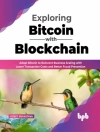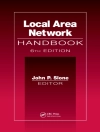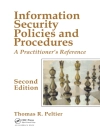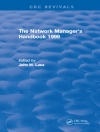Sensor networks are an essential component of the Internet of Things (Io T), and Multimedia Sensor Networks (MSNs) are the most important emerging area in sensor networks. However, multimedia sensing is characterized by diversified modes, large volumes of data, considerable heterogeneity, and complex computing, as a result of which the theory and methods for traditional sensor networks can’t be applied to MSNs.
Based on the authors’ years of systematic research on related theory and methods, this book provides a comprehensive review of MSNs. The coverage ranges from networked sensing and fusion-based transmission, to route discovery and in-network computing. The book presents the most important scientific discoveries and fundamental theories on MSNs, while also exploring practical approaches and typical applications. Given its scope, it is especially suitable for students, researchers and practitioners interested in understanding scientific problems involved in characterizing multimedia sensing features, revealing the transmission mechanisms of MSNs, and constructing efficient in-network multimedia computing paradigms. In this book, readers will learn essential methods for achieving the optimal deployment of, efficient and reliable transmission, and timely information processing in MSNs.
Jadual kandungan
Chapter 1. Introduction to Multimedia Sensor Networks.- Chapter 2. Directional Sensing Models and Coverage Control.- Chapter 3. Data Fusion based Transmission in Multimedia Sensor Networks.- Chapter 4. In-Network Processing for Multimedia Sensor Networks.- Chapter 5. Multimedia Sensor Network Supported Io T Service.- Chapter 6. Prospect of Future Research.
Mengenai Pengarang
Huadong Ma is the Director of the Beijing Key Laboratory of Intelligent Telecommunications Software and Multimedia, and Executive Dean of the Institute of Network Technology, Beijing University of Posts and Telecommunications, China. He was the Chief Scientist of the project “Basic Research on the Architecture of Internet of Things, ” supported by China’s National 973 Program, from 2010 to 2013. He has published more than 280 papers and five books in his areas of expertise, which include the Internet of Things, sensor networks, multimedia systems and networking. He is an Editorial Board Member of IEEE Transactions on Multimedia, IEEE Internet of Things Journal, ACM Transactions on Internet of Things, and Springer Multimedia Tools and Applications. He received the best paper award at the IEEE ICPADS (2010); the best student paper award at the IEEE ICME (2016); and the Natural Science Award of the Ministry of Education of China (2017), as well as the Second Class Prize for the National Teaching Achievement Award of China (2018). In addition, he is a CCF Fellow and Outstanding Council Member.
Liang Liu is a Professor at the Beijing Key Lab of Intelligent Telecommunications Software and Multimedia, Beijing University of Posts and Telecommunications, China. He has published more than 100 papers in his areas of expertise, which include the Internet of Things and multimedia sensor networks. He is a recipient of the National Funds for Excellent Young Scientists (2017), the First Class Prize for the CCF Natural Science Award; and the First Class Prize for the Natural Science Award, Ministry of Education of China (both: 2017), as well as the Second Class Prize for the National Teaching Achievement Award of China (2018).Hong Luo received the M.S. and Ph.D. degrees in computer application from the Beijing University of Posts and Telecommunication, Beijing, China, in 1993 and 2007, respectively. She is currentlya Professor with the School of Computer Science, Beijing University of Posts and Telecommunications, Beijing, China. She is also a Research Member with the Beijing Key Laboratory of Intelligent Telecommunication Software and Multimedia. Her research interests include Internet of Things, edge computing, smart environments, and sensory data analysis and service.












